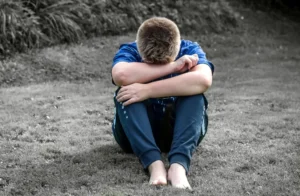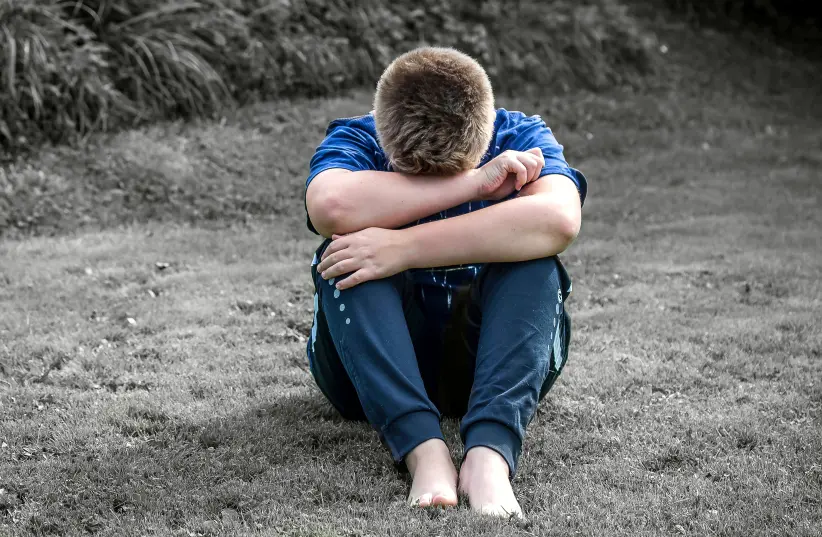Adolescents have faced a myriad of challenges over the last two years. Now that the pandemic appears to be slowing down, it’s time to address the mental health fallout.

The limitations that the coronavirus pandemic impeded on our lives seem to be lessening nowadays, but Israeli youth are still recovering from the closures, Zoom sessions and masks, and in many ways the social distancing measures are having greater long-term effects than we thought.
Data recently published shows a heightened level of distress, an aggravation in risk situations and extreme mental states among Israeli teens.
ELEM- Youth in Distress, a social advocacy group for Israeli teens at risk, recently published its annual report, revealing some shocking numbers: 1,432 teens and young people have attempted self-harm in the 2020 calendar year, one-and-a-half times greater than in 2019.
Drug use also increased — by one-and-a-half times, alcohol use by 1.3x, and there were twice as many teens with eating disorders, the report stated.
What can we do?

In our roles as parents, educators and caregivers, it is especially important to be vigilant about our teens. Behavioral red flags are critical to notice and attend to.
Self-harm, self-violence, and at-home tattooing
Self-harm appears to teens as a “tool” to serve as an answer for difficult life situations. Among other things, it can function as:
A way to transfer emotional pain to real pain
Hurting themselves as part of self-hatred, guilt and/or self-flagellation
Experience a “high” feeling, catharsis
If we look closely, we can find a cause, a story, a source for the distress or trauma that was so great that it led to this.
It’s important to know how to look
Drug and alcohol use
Many adolescents have found themselves for many months in a state of apathy and lack of motivation for learning and development, which easily threw them into drug and alcohol use.
The various state-mandated closures, the anxieties, the economic pressure at home and the conditions of uncertainty intensified risky behaviors and the escape to substances that obscure all those pressures. Teens began to meet in gardens and parks, unsupervised, without boundaries and without adult guidance.
The result was a dramatic increase in risky situations and the use of addictive substances, mainly alcohol. The consequences carry to this day and the discourse over past few months on the topics of depression and suicide have grown.
An important thing to note is that teens who started drinking during the pandemic today find themselves in a cycle of dependence and continue to consume alcohol, sometimes at a level that significantly impairs their functioning.
Eating Disorders
Eating disorders hurt the body, a body that carries our emotional, physical or sexual trauma. They serve as an alternative to active harm, in that it is a more passive form – all you have to do is not eat. Like with many other emotional difficulties, the last two years have led to worsening symptoms.
At the same time, both before and after the pandemic, teens have fallen deep into the pit of body-image issues and eating disorders, with dangerous resutls. The prolonged stay of teens over the past two years on Zooms and social networks has only increased these toxic body comparisons and a massive preoccupation with how our bodies look.
This has led to the internalizing of distorted social messages that encourage unattainable and dangerously unhealthy body results like extreme thinness. This has led damaged self-esteem among many, and caused an increase in eating disorders.
The completely different daily routine and feelings of uncertainty prompted by the last two years has turned food into a means of dealing emotionally with uncertainty and instability, a method of control.
How can we help our teens?
The difficulties that adolescents face require a deep emotional response. It’s important to remember that teens express distress differently from adults.They will often prefer to turn to their friends or just keep their feelings inside rather than discuss them with adults.
So how can you ask them about it? Gently, by establishing a connection when there is trust. When they share they expect us not to panic or run away but mostly to listen.
First, express concern and empathy. Not to try to solve or educate but to be there for them, attentive and embracing.
Think of initial ways to regulate and provide an informal initial emotional response — such as drawing, writing or running.
Refer them to qualified therapeutic professionals, each case individually (family doctor, psychologist, psychiatrist, rehab center, eating disorder center, etc.)
It’s very important to pay attention to abnormal changes in adolescent behaviors, such as sleeping and eating disorders, being closed up, showing depressive dentencies, statements that indicate hopelessness and feeling trapped, statements such as “there no point in life,” or more subtle statements that indicate depression, loneliness and the feeling that “no one knows what I’m going through.”
This can be expressed through a general decline in functioning, such as absences from regular activities, severe fatigue, decreased communication and changes in how often they see friends. It can also be through externalization such as demonstrated anger, risky behaviors, extroverted sexual behavior, weight loss or gain and more. Distress can manifest itself overtly and demonstrably, or be completely hidden from adults.
Karen Naor is the head of the youth centers at ELEM.

